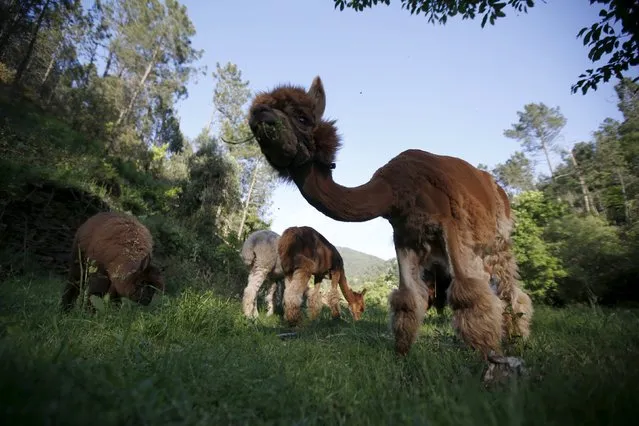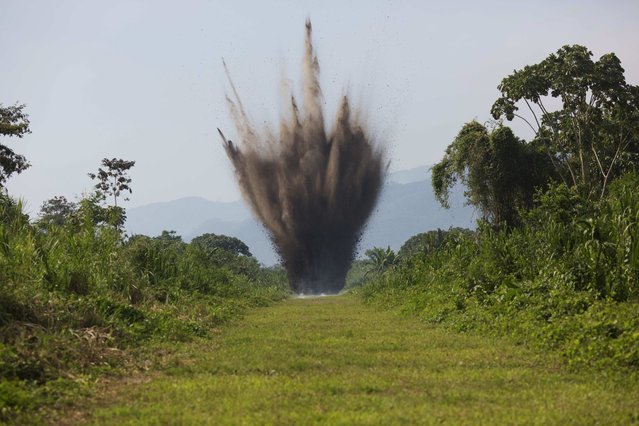
A woman reacts during the annual tomato fight fiesta called “Tomatina”, tomato fight fiesta, in the village of Bunol near Valencia, Spain, Wednesday, August 30, 2023. Thousands gather in this eastern Spanish town for the annual street tomato battle that leaves the streets and participants drenched in red pulp from 120,000 kilos of tomatoes. (Photo by Alberto Saiz/AP Photo)
10 Sep 2023 03:07:00,post received
0 comments







